by Farideh Farhi
Iranian news agencies are reporting that a “knowledgeable source” is suggesting Foreign Minister Mohammad Javad Zarif cancelled his dinner meeting with EU Foreign Policy chief Catherine Ashton on the eve of nuclear talks in Vienna to protest her meeting with civil and women’s rights activists, including the mother of Sattar Beheshti, a blogger who was tortured and died while in custody, during her recent visit to Iran.
I do not know if the reason given for the dinner cancellation is true. There are indications that Ashton may have been occupied in Brussels with discussions on EU sanctions against Russia, and her spokesperson said there were no plans for dinner in the first place. At some level, it is irrelevant whether this is true or not. It is now a “fact” and other reports that the respective deputies of these chiefs did have dinner together are irrelevant since this particular public dance and drama over human rights in Iran is not about policy but about appearances and posturing.
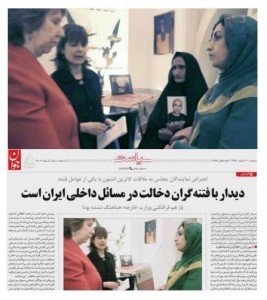 The released photo of Ashton’s meeting with the activists tells it all. Although there were other women in the room, Ashton is presented with only two (besides her translator) — Narges Mohammadi and Gohar Eshghi. The first is a human rights advocate whose inhumane treatment in prison while she was ill, and her quiet dignity in the midst of it all, became a legend; the second is an aggrieved mother from a working class neighborhood who carries a framed picture of Beheshti (her son) everywhere. I would like to know who released the photo and with what intent. But that may also be irrelevant because when it comes to Iranian politics, like elsewhere, what something turns into usually overtakes intent, many times even undermining it.
The released photo of Ashton’s meeting with the activists tells it all. Although there were other women in the room, Ashton is presented with only two (besides her translator) — Narges Mohammadi and Gohar Eshghi. The first is a human rights advocate whose inhumane treatment in prison while she was ill, and her quiet dignity in the midst of it all, became a legend; the second is an aggrieved mother from a working class neighborhood who carries a framed picture of Beheshti (her son) everywhere. I would like to know who released the photo and with what intent. But that may also be irrelevant because when it comes to Iranian politics, like elsewhere, what something turns into usually overtakes intent, many times even undermining it.
Ashton is gone and the political storm she ignited has been left behind. She has no EU parliamentarians asking questions about what she did in Iran. The symbolic photo is of good use for placating the constituencies who worry the EU will abandon human rights for the sake of a nuclear deal. She reportedly showed compassion. She told Eshghi that she sympathized because she is also a mother and that she would talk to authorities regarding her desire for a public trial on charges of first degree murder (a trial has been set for the accused in early April for second-degree murder). There is no evidence that Ashton actually carried out her promise of talking to an official before she flew out of Tehran. But the photo is for keeps.
In Tehran, though, pandemonium and controversy combined with quite a bit of comedic relief have been the order of the day. As was the case when a European Parliament delegation met with Sakharov Prize winners Nasrin Sotudeh and Jafar Panahi, no government official is taking responsibility for Ashton’s itinerary. Everyone is feigning aghast at what happened, but on the question of who allowed it to happen, the official response is more like mystification.
Meanwhile Iranian hard-liners could have limited themselves to making a big fuss and hurling insults at the appearance and age of the female leader, as they usually do in response to US nuclear negotiator Wendy Sherman’s statements. Additionally, the 40 or so hard-line MPs, generally close to Ayatollah Mesbah Yazdi’s Steadfastness Front, could yell at the foreign and intelligence ministers for either permitting the meeting or not preventing it; drag them in for questioning and explanations that would not be satisfactory in any case; warn against the rise of sedition yet again; and then move on to another controversy.
But for the opponents of Hassan Rouhani’s government, Ashton’s meeting was both an opportunity and challenge. An opportunity because Ashton’s sudden turn towards human rights, after so many years of being known solely as someone leading negotiations with Iran, was a timely confirmation of the point made again last week by Leader Ali Khamenei: Western pressure will not end even if the nuclear issue is resolved. He has repeatedly stated that they will come after us for other stuff including human rights. (One colorful cleric took this further during a Friday Prayer by saying that after human rights it’ll probably be animal rights).
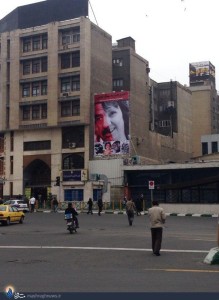 Ashton’s photo gave hard-liners an opportunity for a twofer: questioning Western motives in nuclear talks and screaming sedition at domestic opponents. One MP announced thunderously that Iran is not Ukraine! But the photo also provided them a winning point regarding Western hypocrisy. A poster that showed up in Tehran, collating Ashton’s half-face with Saddam’s — highlighting the human costs of the chemical weapons supplied to Iraq by Europeans during the Iran-Iraq War — was intended to remind everyone that the humanitarian impulse is applied very selectively when state interests are involved.
Ashton’s photo gave hard-liners an opportunity for a twofer: questioning Western motives in nuclear talks and screaming sedition at domestic opponents. One MP announced thunderously that Iran is not Ukraine! But the photo also provided them a winning point regarding Western hypocrisy. A poster that showed up in Tehran, collating Ashton’s half-face with Saddam’s — highlighting the human costs of the chemical weapons supplied to Iraq by Europeans during the Iran-Iraq War — was intended to remind everyone that the humanitarian impulse is applied very selectively when state interests are involved.
The photo is nevertheless also a challenge since it exhibits what the defenders of doctrine fear most: a collusion of dissidents and the usually devoted, working-class poor against doctrine and injustice. So threatening is the photo that the Javan daily decided to do its own reframing. It simply used Photoshop to delete Eshghi’s image (state TV did the same a few days later) and then, when Javan was ridiculed (since the photo with Eshghi in it had already been published by a reformist paper) said it did not want to offend the aggrieved mother by placing her next to a “seditioner.” (The seditioner in question, Mohammadi, was even called a terrorist by a female MP, a charge Mohammadi responded to with her pen).
According to Javan’s explanation, the deletion had nothing to do with the discomfort caused by Eshghi’s appearance, which so resembles that of thousands of other mothers who saw their sons “martyred” in the Iran-Iraq War. Even more discomforting is that the photo of her son she carries everywhere brings to mind the images displayed throughout Iran of the many young Iranian “martyrs” who died in the Iran-Iraq War. The Islamic Republic has celebrated the courage, endurance, patience, and piety of these mothers and sons unremittingly. Separating Eshghi from the mothers who sent their sons to the war front, who suffered quietly and longingly when their boys died but still took pride in what they died for, makes the digital elimination of her image the only possible solution to a very uneasy predicament.
In the words of the young and very funny Iranian satirist, Aydin Sayar, writing for the Qanun daily, all this explains why Photoshop is the greatest of human inventions: it allows us to visualize every desire. But Javan’s editorial staff should really be faulted for not using Photoshop to its full potential. In Sayar’s vision, they could have, for instance, transposed Eshghi to a photo of Ashton meeting with former nuclear negotiator Saeed Jalili. Eshghi and Jalili, meeting Ashton together, confirm doctrine and assure continued political clout.
My bet is that with the reported creation of a “truth commission” in the Parliament to examine the “issue of Ashton’s meeting with an element of sedition” this round of loud criticism directed at the foreign and intelligence ministries will likely last longer than the previous round involving members of the European Parliament. But it will also eventually pass, probably when a better opportunity arises. (It should be pointed out that Zarif is getting it from the other side as well. Mohammadi wrote a public letter criticizing him for calling her a seditioner in an interview; never mind that the reporting of Zarif’s statement was in Mashreq, a hard-line news site that’s not usually a reliable source for exact wording.)
Zarif, like other cabinet members in general, is in the process of perfecting the art of lying low and not reacting much. But he did increase the drama when he stated on his Facebook page that for the sake of the “national interest” he will remain silent for now. He also called on all to avoid hasty judgments and instead focus on the joy of the World Cup victory of the Iranian wrestling team in Los Angeles as the Iranian New Year approaches. Expressions of humility and positivity in the face of an aggressive opponent’s charge are as good as the foreign minister is going to give for now.
Beyond the immediate situation, though, the loud noise surrounding Ashton’s visit does reveal a point regarding the effectiveness of external pressure in relation to human rights. Her visit has been used by hard-liners to yell sedition ad nauseam but it has also stirred a conversation regarding whether foreign officials (including ambassadors) should be allowed — or are entitled — to meet with the opposition without controversy. After all, it is said that Iranian officials meet with opposition figures in other countries all the time. So the reality of Iran’s polity being contested, and its civil society alert, opens up the possibility of using external concerns for Iranian human rights to push for some sort of change.
But loudness may also undercut efficacy. For instance, in the past couple of months, several prominent Iranians, including former President Akbar Hashemi Rafsanjani and MP Ali Mottahari, have made the point that negotiations for the release of former presidential candidates Mehdi Karroubi and Mir Hossein Mousavi (and his spouse Zahra Rahnavard) were getting somewhere but came to a halt when there was too much noise. According to Motthari, who has repeatedly called for the release or trial of these political leaders, the lifting of limitations on them was in the works in October but was derailed by discussions of the issue in the press and “the reformist claims of victory.” He went on to say that the intent is “to remove the limitations gradually in a way that is not really noticed.”
It is hard to see how such politically charged issues can be managed in an unnoticed way but the appeal for quiet diplomacy inside Iran as well as gradual and incremental (mini-steps, really) is nevertheless offered as a better alternative to making more drastic demands or moves that carry the potential of turning the hard-liners’ screams into reactionary policy. With the experience of the reformist era in everyone’s mind, the worry is that drastic moves or bold and unattainable demands at this point will end up frightening and again pushing the more middle of the road conservatives into the hard-liners’ arms.
Not surprisingly, there is evidence of the government’s preference for — and perhaps a degree of effectiveness in — quiet and incremental change. Last week the charismatic student leader Abdollah Momeni was released one day before his 5-year term was over. According to an interview his wife gave to the Europe-based Rooz Online, he was taken out of prison quietly and left in the middle of the street to find someone to take him to his home and spouse. She suggested that this was done to prevent a noisy greeting party the day he was supposed to be released. This was certainly not a decent thing to do, but the fact that no new charges to prevent the release of this political prisoner were made up could also be considered a quiet step.
Another tiny step was taken yesterday when Mousavi and his wife were allowed to visit Rahnavard’s old and ailing mother. When they encountered a dozen other visitors by chance, the guards, after some resistance, ultimately allowed the family to briefly talk to each other. This surprising event was seen as a sign of opening up made possible by Rouhani; minimal, but nevertheless a change.
The debate over how fast or how loudly to challenge the issue of political prisoners is also happening among the reformists. Even some reformist political prisoners who have in the past written public letters criticizing the conduct of the highest officials have gone quiet in the past couple of months, perhaps persuaded that quiet diplomacy will work better for now. Others have not.
Even if the government manages to persuade most of Iran’s citizens that this is the time for patience and tiny, step-by-step incremental change, it cannot convince everyone. Nor can it control the impatience of many networks outside of Iran that monitor Iran’s human rights situation on a daily basis with its slow pace of change and even occasional reversals. Any opening energizes them to call for more. This is just the way human rights activism works throughout the world.
This leaves the Rouhani government with a delicate balancing act between taking mini-steps for change and defending itself against pressures and charges that will come from forces on both sides of the political spectrum. So far, Rouhani is more or less managing the situation; Zarif met with Ashton this morning and it was all nuclear talk.

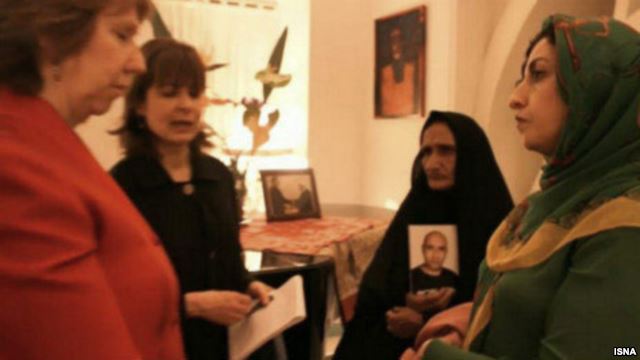

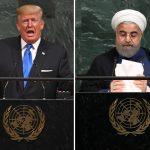
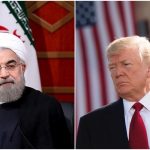
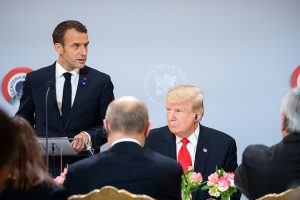
So many steps to be taken, so many stones cast. Why did she-Ashton-go to Iran and meet with the people and in a word, invite this sort of reaction? Is this the “new Ashton” since her telling call on the Ukraine was leaked? Or perhaps, it’s meant to show the hypocritical behind the scenes plays going on, by the E.U/U.S.?
Respect for human rights should be one of the core points in the opinion of many, making it into a taboo is tantamount to condoning what is going on … if the objective of the “international community” is to rehabilitate and allow Iran to reintroduce itself into the international community, what better accomplishment than an Iran that has full respect for the civil rights of its own citizens?
Your analysis as usual is thorough and nuanced, and it is always a pleasure to read and learn from it.
Apart from the human rights issues and injustices these two persons may have suffered, I wonder if the Iranian leadership has become more skittish after seeing the disingenuous nonsense pulled by Nudelman and Company in Ukraine and the chaos and putsch that resulted from it, or the less than trustworthy role played by the EU and Ashton herself. Apart from this, the leadership has good reason to question her intentions after so many years of disinformation disseminated by the West (including Ashton) about its nuclear program. (See, for example Gareth Porter’s extensively researched book “Manufactured Crisis…”, notwithstanding which the neocons in the Administration and Congress are still peddling the same line.). Furthermore, with Israel still trying to sabotage and/or compromise Iran’s nuclear program with computer viruses and the targeted assassinations of Iranian scientists, and our NGOs trying to instigate political unrest, not only to overthrow the regime, but also to force “civilization” change, what’s to believe? While Ashton should be speaking truthfully with the Iranians about all issues, she should also be walking on diplomatic eggshells if she wants to build the trust necessary to cut a meaningful deal. With the mutual trust still so fragile, every action must be carefully weighed.